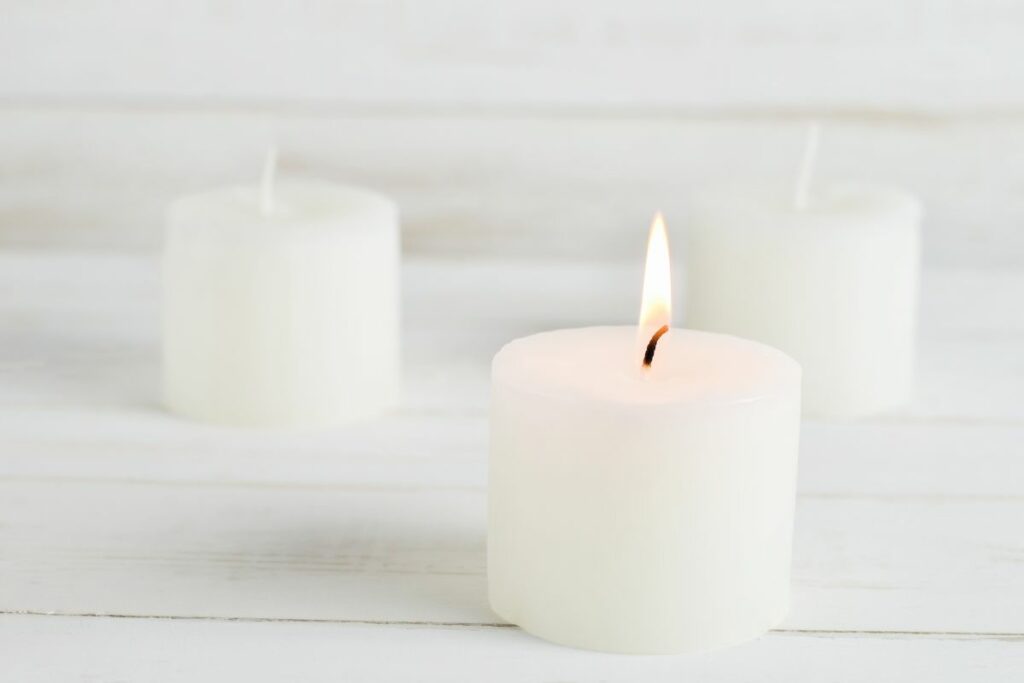White has long been a symbol that resonates deeply on a spiritual level. You might envision a blank canvas or the pristine snow, each representing purity, clarity, and peace.
In spiritual traditions, white often stands for a state of wholeness and completion. Approaching the color white, you’re invited into a realm where the possibilities are infinite, and the paths to self-discovery and enlightenment are illuminated.
In your journey to understand spirituality, you’ll find that white holds various meanings across cultures and beliefs. It’s considered the most protective of colors, often used to shield against negative energies.
White’s association with angels and the divine reflects its position as a symbol of higher consciousness and faith. As you explore the spiritual significance of white, you may discover its connection to inner wisdom and the greater universal truths.
Every color can evoke emotions and spiritual responses, and white’s ability to reflect light grants it a unique role as a conveyor of positivity and hope.
The color encourages feelings of renewal and could inspire you to clear the clutter, both physically and mentally, to embrace a fresh start.
Whether in meditation or ritual, white can be a guiding color towards peace and a reminder of the soul’s potential to transcend the everyday.
Cultural Significance
The spiritual color white holds varied connotations within cultural contexts that you may encounter. Its symbolism can resonate deeply with personal and communal beliefs.
Purity and Innocence
In many traditions, white is emblematic of purity and innocence. At weddings, the white dress of a bride is now a common sight, symbolizing a beginning in its purest form.
Religious ceremonies frequently use white to signify the unblemished nature of the soul. This association rings true across cultures, from Western christenings to Eastern spirituality, where purity and innocence are embraced.
Peace and Tranquility
White is often associated with serenity and peacefulness. Think of the white dove, an enduring emblem for peace globally, or white flags waved to signify ceasefire.
This color’s role in promoting peace and tranquility is leveraged during mediation sessions or spaces designed for calm reflection.
New Beginnings and Fresh Starts
Embrace the color white when seeking a clean slate or to herald new life phases. In many practices, white is the perfect backdrop for new beginnings and fresh starts, marking transitions like name ceremonies, baptisms, or other rites of passage.
It’s the hue most associated with vast potential and endless possibilities, like a blank canvas awaiting a painter’s first stroke.

Religious Interpretations
In diverse religious traditions, white often carries deep spiritual meaning. You’ll find it representing concepts like purity and enlightenment.
Christian Symbolism
In Christianity, white is a color that signifies purity and is often seen in the robes of angels and the garb of Christ after the Resurrection.
You’ll read in Psalm 51:7 that being washed and becoming whiter than snow is symbolic of being cleansed from sin.
During Christian rituals, white garments are worn during significant life events such as baptisms and weddings, emphasizing innocence and new beginnings.
Eastern Spiritual Concepts
White also plays a significant role in Eastern spiritual practices. In Hinduism, it is linked to sattva or purity and harmony, relating to the spiritual essence of Brahman.
It signifies a guiding principle that promotes balance and mindfulness in your life.
Looking into New Age beliefs, the color is said to be associated with a surrounding light for those who have passed on to the spirit world, as detailed in spiritual interpretations.
Whether in the form of clothing, deities, or sacred spaces, white embodies a multitude of sacred meanings in the East.
Psychological Associations
When you think about the color white from a psychological perspective, you’re often associating it with feelings of calmness, comfort, as well as simplicity and order. These associations can shape your emotional state and influence how you feel in different environments.
Calmness and Comfort
White is known for its ability to create a sense of calmness and comfort. When you surround yourself with white, it can feel like a clean slate, bringing a tranquil and peaceful atmosphere.
This can be particularly comforting during stressful times. For instance, a study on color psychology suggests that white has a positive impact on mental clarity and can reduce feelings of clutter and chaos.
Simplicity and Order
Additionally, white is often connected to simplicity and order. This hue may give you a sense of structure and cleanliness, which can be mentally soothing.
It’s not uncommon for you to experience an organizational impulse when in a predominantly white space, as it promotes a minimalist aesthetic that emphasizes orderliness.
In color psychology, white is sometimes seen as a symbol of a fresh beginning or a blank canvas, further highlighting its association with simplicity and clarity.
